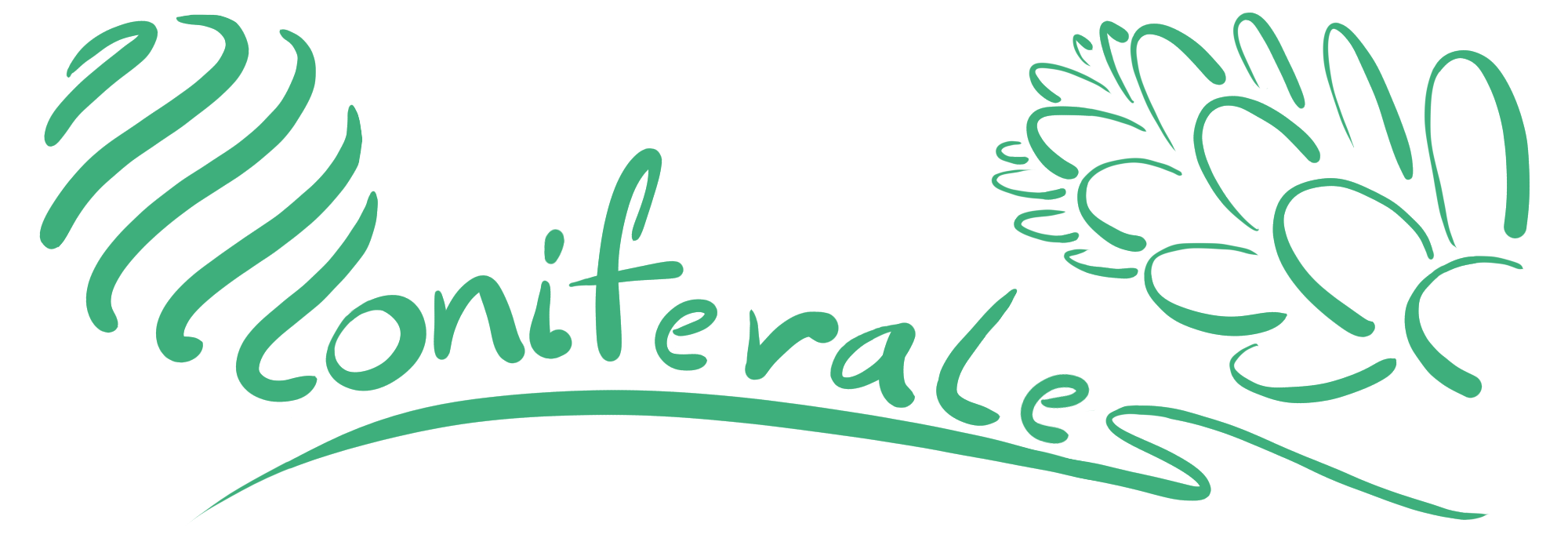Pinaceae Abies delavayi Franch.
Etymology
Abies refers to ‘to rise’; indicating large trees.
delavayi refers to the plant collector P. J. M. Delavay.
Colloquial Name
Delavay’s fir
Description
These trees grow between 30 and 40 meters tall, with trunks reaching a diameter of 1 to 1.5 meters. The trunk is straight, cylindrical, and unbranched at the base, supporting a broad, pyramid-shaped crown that flattens out as the tree ages. The bark of young trees is smooth and varies from gray to brownish-gray. As the tree matures, the bark becomes deeply fissured and flakes off in small pieces.
The main branches are thick and spread outward, with the upper ones angling slightly upward. The smaller secondary branches also spread outward and slightly upward. The twigs are stiff and rounded, with a color that ranges from dull maroon or brown to dark reddish-brown or purplish-brown, sometimes appearing glossy. As they age, they turn gray and may be smooth or have faint grooves. The first-year shoots may have a fine fuzz, especially in the grooves, or be completely hairless. The scars left by fallen leaves are somewhat angular or circular.
The buds are small, rounded, or sometimes up to 8 mm long on the leading shoots. They are very sticky with resin. The bud scales are broad, rounded at the tip, and reddish or greenish-brown, staying on the tree for several years before falling off. The needles are arranged in a spiral pattern and form several overlapping rows that spread outward. They vary in length and point slightly forward. On cone-bearing branches, they stand more upright. The needles measure between 1.5 and 3 cm long, sometimes reaching 4.3 cm, and are 1 to 2 mm wide, occasionally wider. They are twisted at the base and have a long, narrow shape, often curving or forming an S-shape. The upper surface is glossy dark green, while the underside is bright white, sometimes with a waxy coating along the midrib. The edges are strongly curled under, and the tips can be either rounded or slightly notched. Stomata form two distinct bands on the underside.
The pollen cones grow along the lower sides of branches, hanging down from the bases of the needles. They measure 2 to 3.5 cm long, sometimes reaching 4 cm, and are yellow with violet-colored pollen-producing scales. The seed cones grow upright along the branches on short stalks that have many small scales. They are cylindrical or oblong, with a flattened or slightly indented tip. When young, they are a deep violet-blue color, later darkening to purplish-black or nearly black, often with bluish bracts. As they ripen, they turn a dull reddish-brown. The cone’s central structure remains on the tree after the seeds are released, forming a thick, cone-shaped remnant that is purplish-brown.
The cone scales are fan-shaped and sometimes slightly triangular, measuring 1.2 to 2 cm in length and 1.5 to 2.5 cm in width at the middle of the cone. Their surface is smooth but has a fine fuzz. The upper part of the scale is thickened, with a rounded, slightly curled edge, while the sides have an irregular, somewhat jagged shape. The base of the scale narrows into a short stalk. The bracts inside the cone are elongated and narrow, sometimes curving at the tip, with small or long, thin extensions. They measure 1 to 2 cm in length and may either remain hidden inside the cone or stick out slightly, usually with their tips spreading outward.
The seeds are oblong, 5 to 8 mm long, and brown, though they are often mostly covered by a dark, almost black wing membrane. The seed wings are wedge-shaped, measuring about 10 mm long and 6 mm wide, and range in color from light brown to a darker shade with a purplish-blue tint.
Subordinate Taxa
There exist 4 subordinate taxa for Abies delavayi:
- Abies delavayi ssp. fansipanensis
- Abies delavayi var. delavayi
- Abies delavayi var. motuoensis
- Abies delavayi var. nukiangensis
Distribution
This map shows botanical records (points) for this taxon. By opening the map’s sidebar (collapsed by default) you can toggle visibility or change the basemap. By clicking on records, you reveal more information.
TDWG Codes
3, 36, CHC, CHC-YN, CHT, 4, 40, EHM, EHM-AP, 41, MYA, VIE
Habitat
The natural habitats for Abies delavayi are subtropical/tropical moist montane forests, temperate forests. It is naturally found at an elevation of at least 2400 up to 4300 metres. Other conifers associated with Abies delavayi are:
- Picea likiangensis
- Picea brachytyla var. brachytyla
- Tsuga chinensis
- Tsuga dumosa
- Juniperus formosana
USDA Hardiness zone – 7
Abies delavayi is hardy to USDA Zone 7 (Bannister & Neuner, 2001), meaning its frost tolerance lies somewhere in the range of -17.8C (0F) to -12.2C (10F).
Species Continuity
The population trend for Abies delavayi is unknown. There are ongoing threats for Abies delavayi and they are listed as follows:
- 1 Habitat Loss & Degradation
- 2 Overexploitation & Resource Use
- 4 Invasive Species / Pathogens & Genetic Risks
- 5 Natural System Modifications
IUCN Category – LC
According to the IUCN Red List, Abies delavayi has been assigned the status of LC(Least Concern). This means that according to the Red List criteria, this species is not qualified as threatened.
Superordinate Taxa
The nearest superordinate taxon for Abies delavayi is Subsect. Delavayianae. The coordinate taxa for Abies delavayi are therefore:
- Abies densa
- Abies fabri
- Abies fanjingshanensis
- Abies fargesii
- Abies forrestii
- Abies spectabilis
- Abies yuanbaoshanensis
Abies delavayi is further placed under Abietoideae. Abies delavayi is also placed under Pinaceae.
This map shows botanical records (points) for this taxon. By opening the map’s sidebar (collapsed by default) you can toggle visibility or change the basemap. By clicking on records, you reveal more information.
Cultivars
‘Buchanan’, ‘Buchanan’s Dwarf’ , ‘Green Giant’, ‘Headfort’, ‘Major Neishe’, ‘Midnight Blue’, ‘Nana’, ‘Nana Headfort’, ‘Nana Herdford’



Reviews
There are no reviews yet.